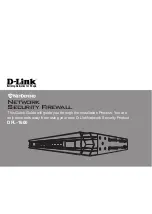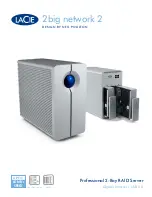
– 141 –
C
HAPTER
4
| Configuring the Switch
Configuring the Spanning Tree Algorithm
Table 10: Recommended STA Path Costs
Port Type
Link Type
IEEE 802.1D-1998 IEEE 802.1w-2001
Ethernet Half
Duplex
100
2,000,000
Full Duplex
95
1,999,999
Trunk 90
1,000,000
Fast Ethernet
Half Duplex
19
200,000
Full Duplex
18
100,000
Trunk 15
50,000
Gigabit Ethernet
Full Duplex
4
10,000
Trunk 3
5,000
Table 11: Default STA Path Costs
Port Type
Link Type
IEEE 802.1w-2001
Ethernet Half
Duplex
2,000,000
Full Duplex
1,000,000
Trunk 500,000
Fast Ethernet
Half Duplex
200,000
Full Duplex
100,000
Trunk 50,000
Gigabit Ethernet
Full Duplex
10,000
Trunk
5,000
◆
Priority – Defines the priority used for this port in the Spanning Tree
Algorithm. If the path cost for all ports on a switch are the same, the
port with the highest priority (i.e., lowest value) will be configured as
an active link in the Spanning Tree. This makes a port with higher
priority less likely to be blocked if the Spanning Tree Algorithm is
detecting network loops. Where more than one port is assigned the
highest priority, the port with lowest numeric identifier will be enabled.
(Range: 0-240, in steps of 16; Default: 128)
◆
Admin Edge (Fast Forwarding) – You can enable this option if an
interface is attached to a LAN segment that is at the end of a bridged
LAN or to an end node. Since end nodes cannot cause forwarding loops,
they can pass directly through to the spanning tree forwarding state.
Specifying edge ports provides quicker convergence for devices such as
workstations or servers, retains the current forwarding database to
reduce the amount of frame flooding required to rebuild address tables
during reconfiguration events, does not cause the spanning tree to
initiate reconfiguration when the interface changes state, and also
overcomes other STA-related timeout problems. However, remember
that this feature should only be enabled for ports connected to an end-
node device. (Default: Edge)
◆
Auto Edge – Controls whether automatic edge detection is enabled on
a bridge port. When enabled, the bridge can determine that a port is at
the edge of the network if no BPDU's are received on the port. (Default:
Enabled)
◆
Restricted Role – If enabled, this causes the port not to be selected
as Root Port for the CIST or any MSTI, even if it has the best spanning
Summary of Contents for EX26262
Page 1: ...Layer 2 Gigabit PoE Ethernet Switch Management Guide...
Page 2: ......
Page 3: ...MANAGEMENT GUIDE...
Page 4: ......
Page 6: ...6 ABOUT THIS GUIDE...
Page 18: ...18 FIGURES...
Page 20: ...20 TABLES...
Page 22: ...22 SECTION I Getting Started...
Page 34: ...34 SECTION II Web Configuration...
Page 46: ...46 CHAPTER 3 Using the Web Interface Navigating the Web Browser Interface...
Page 290: ...290 CHAPTER 5 Monitoring the Switch Displaying Information About Flow Sampling...
Page 294: ...CHAPTER 6 Performing Basic Diagnostics Running Cable Diagnostics 294...
Page 300: ...CHAPTER 7 Performing System Maintenance Managing Configuration Files 300...
Page 302: ...302 SECTION III Appendices...
Page 320: ...GLOSSARY 320...
Page 325: ......
Page 326: ......
















































